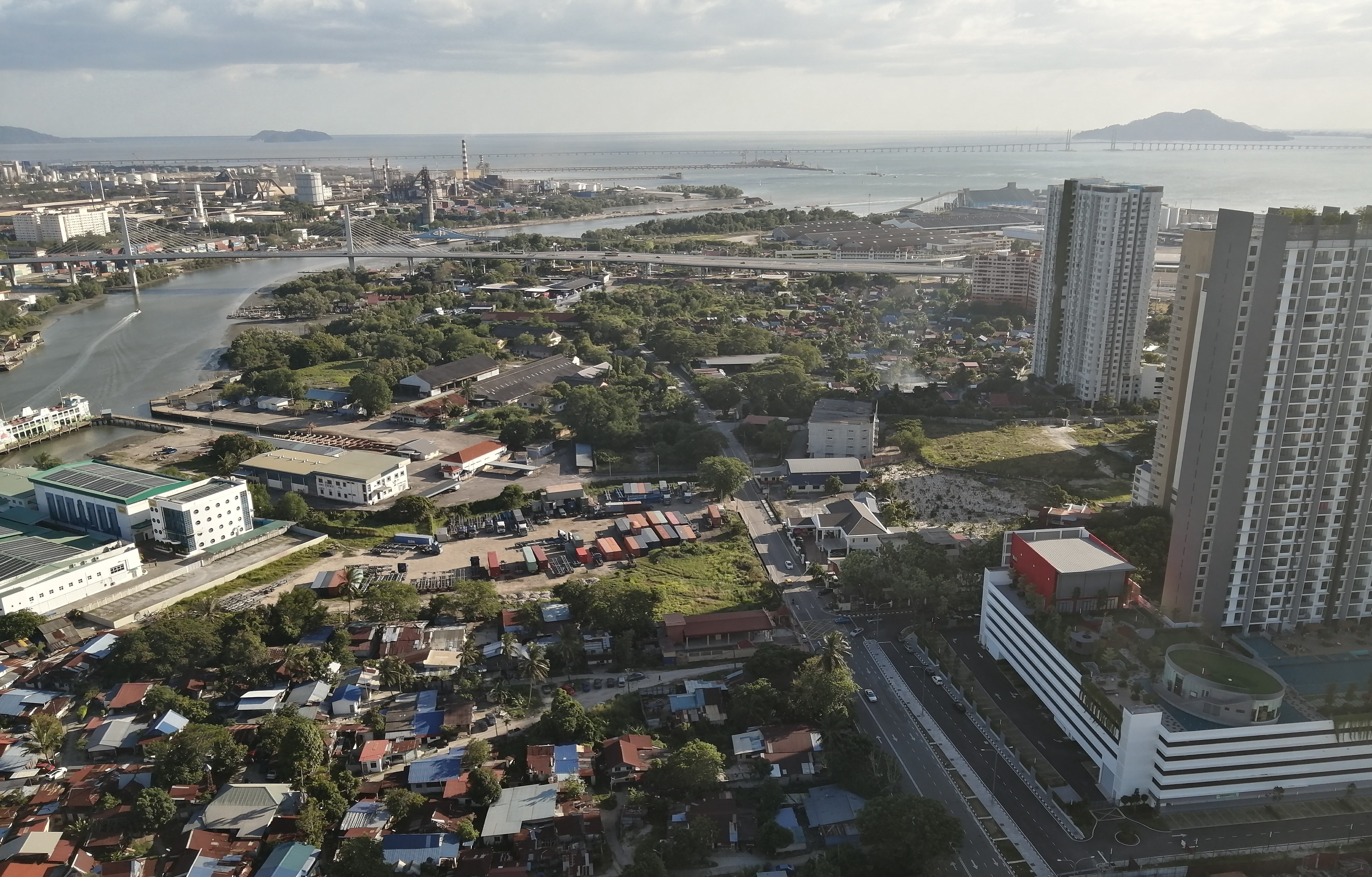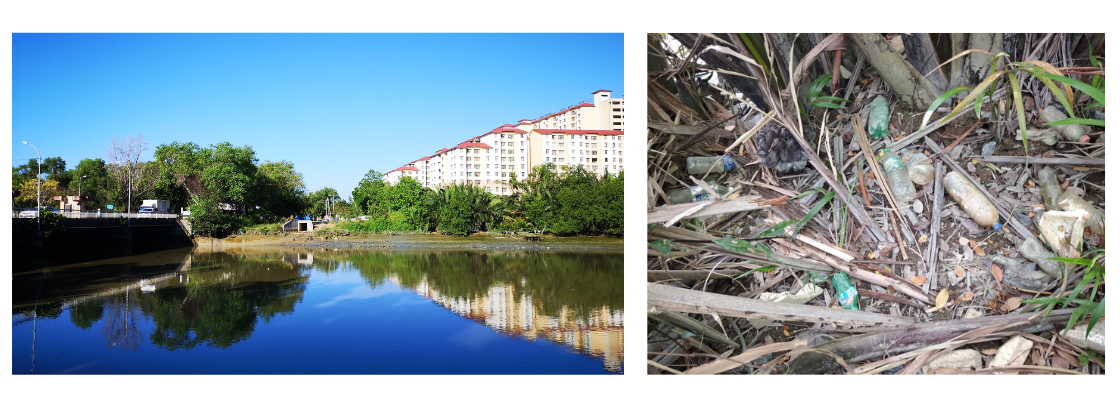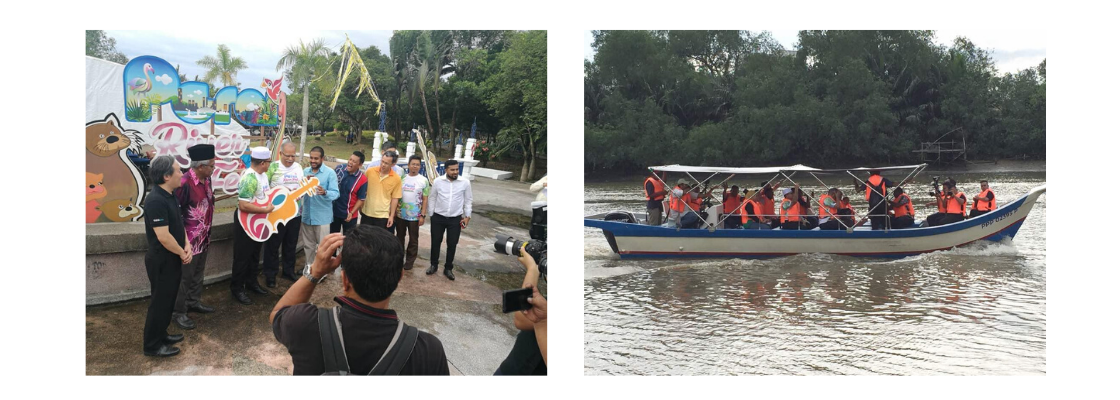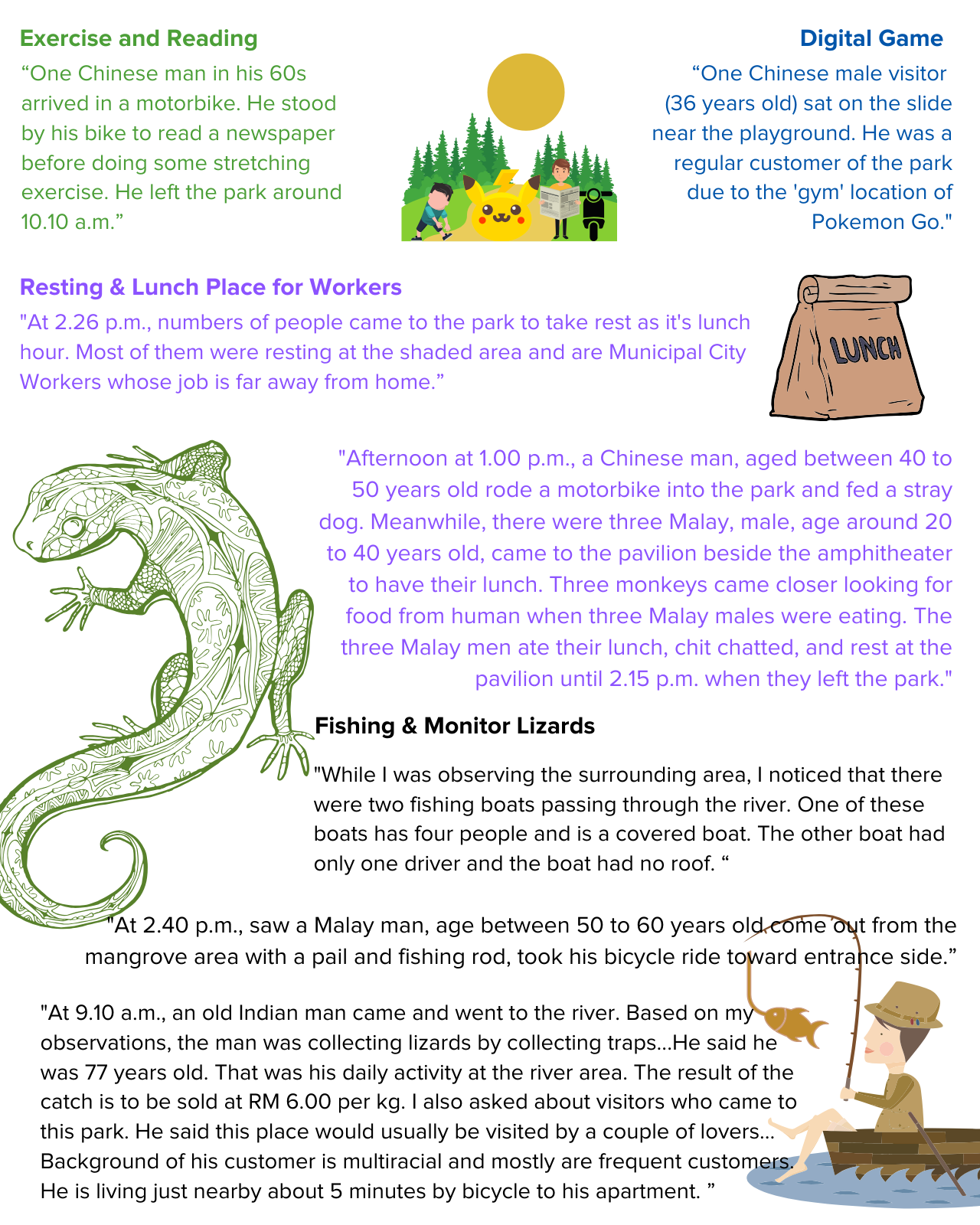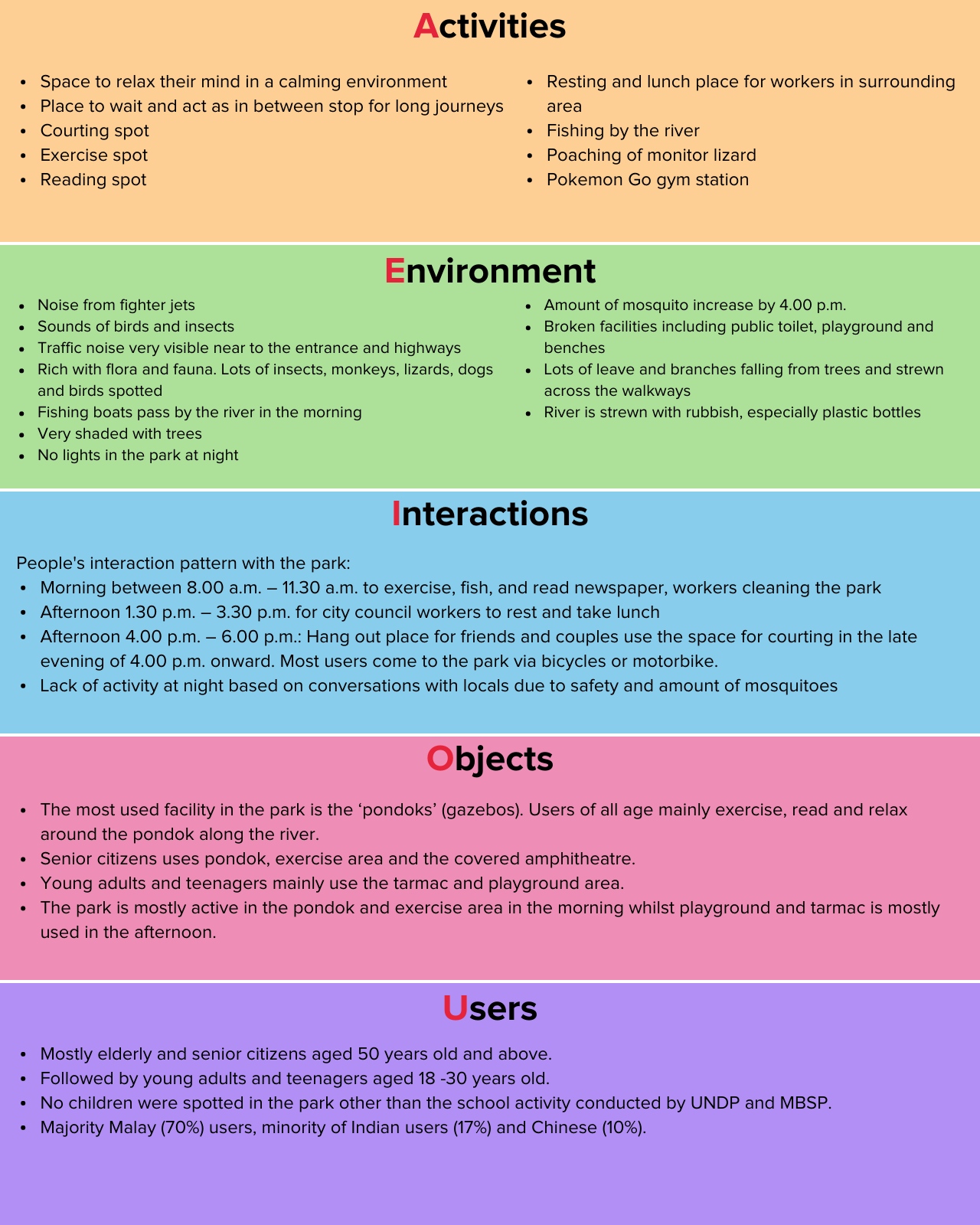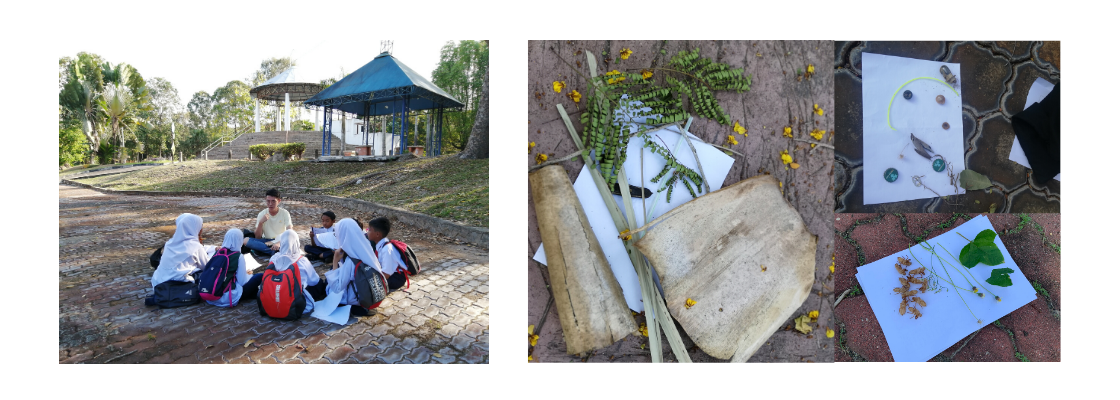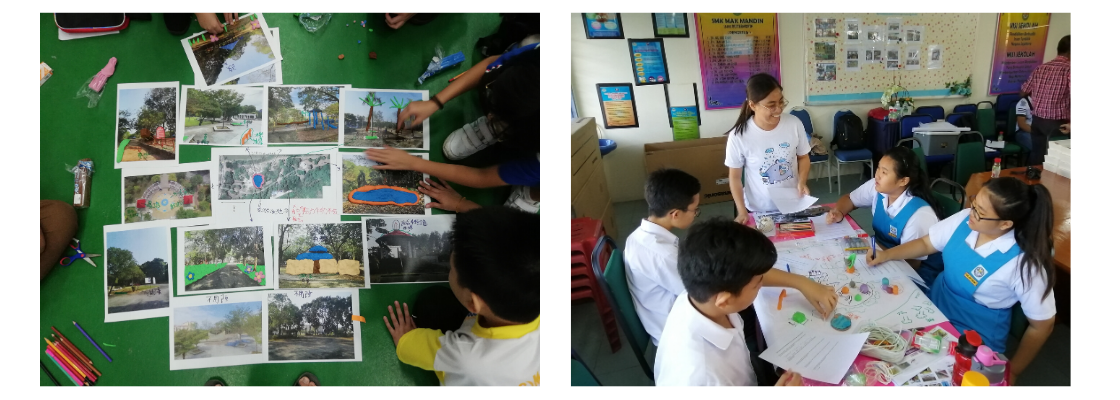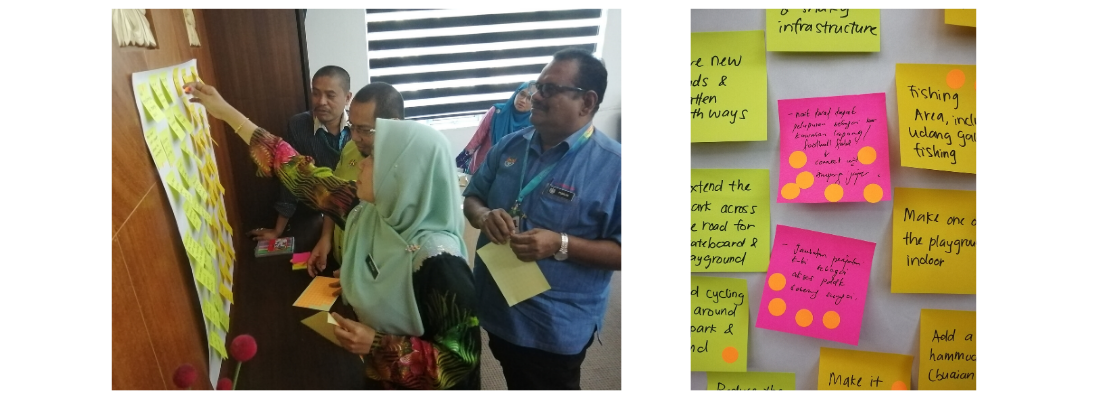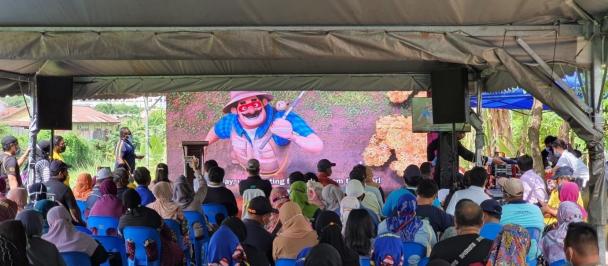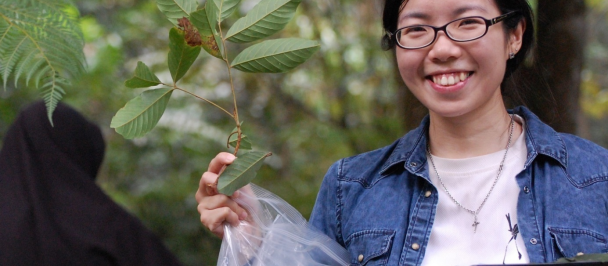After almost six weeks of being stuck indoors due to the Movement Control Order (MCO), some of us in Malaysia may have forgotten that nature exists! It is still there and is enjoying the social distance from our activity and impacts. In conjunction with Earth Day, we want to take a moment to remember what we are missing and to reflect on the urban-nature relationship we would like to see when we are able to leave our homes again. So, we share here our journey of experimenting with inclusive innovation approaches, two months ago during our first Accelerator Lab learning cycle.
Contested urban watersheds and green spaces
Seberang Perai aerial view by day. Photo credit: Benjamin Ong/UNDP Malaysia
Rising from the banks of the Perai River, the city of Seberang Perai is rapidly transforming into an industrial and technological hub with a growing retail and eco-tourism scene that leverages on its rich mangrove forests. However, urbanization and economic growth has also led to degradation of water bodies and natural resources—industrial waste, indiscriminate agricultural dumping and litter run-off from rain are but some of the pollutants sullying the Perai River and its tributaries.
The Seberang Perai City Council (Majlis Bandaraya Seberang Perai – MBSP) and Think City believe that local support for the river is needed for achieving and sustaining river rehabilitation. To achieve this, MBSP and Think City are developing strategies for improving community access—in particular, by rehabilitating parks and other green spaces along the Perai River.
View from the park: a busy highway, low-cost flats and the Perai River. Meanwhile, plastic bottles abound on the riverbank. Photo credit: Sandra Leng and Nian Sheng/UNDP Malaysia
One such site is the Ampang Jajar Park (AJP), with direct access to the river, a border to a secondary forest, and rich in wildlife. There are no less than six blocks of low-cost flats and numerous schools Within a five -kilometre radius of the park. Unfortunately, rubbish, encroachment and illegal poaching are major challenges in maintaining the health and attractiveness of the river and the park.
The Perai River Fest, organized annually by MBSP and Think City since 2018, features performances and boat rides. Photo credit: Think City
Various strategies to attract park users have been attempted: development of cycling paths along the river, recreational activities such as kayaking, and community festivals to create awareness and foster a relationship between residents and the river. While the events have drawn crowds and sparked early interest among the participants, these have largely been stand-alone events. Challenges persist in sustaining interest and creating long-term, local ownership for the river: only 30% of the attendees in these events are residents living around the river and park, with the remaining 70% coming from outside Seberang Perai.
With these challenges in mind, we explored the potential of user-led design as a tool for improving community support/buy-in. Unlike conventional design methods that tend to prioritise the local authority’s point of view, user-led design puts user viability up front. This is important in a park setting heavily dependent on physical infrastructure, as it is difficult and expensive to change the landscape and functionality of the park in response to new user experience data once it is built.
Observe and you will find: Ethnographic insights
We began with an ethnography exercise to better understand who uses the park and for what. Powered by a team of youth research assistants, we engaged park users in their “natural habitat” over several days, acquiring more humanised user-centred stories on how the existing park design is or is not serving them. The observation exercise produced rich, social data that allows us to uncover systemic drivers and hidden potentials that are otherwise difficult to detect. Here are some verbatim accounts from the ethnography exercise:
Observation data summarised in an AEIOU Framework; the type of activities taking place; the environment; interactions of park users; the objects and how they are utilised; and the type of users. Photo credit: UNDP Malaysia
Experimenting with young minds: Prototyping activity
Next, we engaged a hitherto-unreached user group: schools. Over the course of a full day, we invited 62 students, aged 10-14 years, to experience the park and river with their senses: looking, listening, smelling, and touching scoops of water from the river. They were invited to find meaning in the objects in the park, imagine conversations with the river, and explore what its future might be. This was supported by a guided tour to introduce the students to the park’s ecology and wildlife.
Storytelling the river’s tomorrow and today: ‘Headlines of Tomorrow’ a scavenger show-and-tell. Photo credit: Benjamin Ong, Sandra Leng, Wai Leng, and Yue Qi/UNDP Malaysia
After the site visit, students returned to school to reflect on their experiences at the park, as well as design what they thought the park—and activities there—could be.
Prototyping activities included annotating photographs of scenes at the park, as well as building spatial models. Photo credit: Benjamin Ong/UNDP Malaysia
Co-designing parks with youth and children is usually a low priority. This, perhaps, is one reason why children are now absent from the park. Unless users are consulted, it is unlikely the park will truly serve the community’s needs and wants. After our activity, 90% of the students indicated great interest in coming back for future nature education activities in the park. They unanimously agreed that the river is polluted, and that the park needs serious refurbishment to be more attractive.
The ethnography findings and prototype outputs were collated as recommendations to MBSP and Think City. Taken together, ethnography supported prototyping: prototyped elements like food trucks and water stations, paved pathways to the river, and boat rentals by the banks—were given more credibility based on our observations of user behaviour at the park.
Next steps for sustainability: Local governance and ownership
As our country office, as well as UNDP in Asia and the Pacific, grapple with SDG localization and area-based approaches, our work in Seberang Perai offers both lessons and future opportunities. Directly engaging sub-national government and the communities most affected by issues on the ground helps us connect top-down policy implementation with last-mile struggles, creating a framework for bottom-up learnings to better inform policy.
MBSP Collective Intelligence exercise: more ideas flowed through dot voting on students’ prototype recommendations. Photo credit: Benjamin Ong/UNDP Malaysia
For many local authorities, implementing the SDGs is not about high-level policy dialogues, but rather, the nuts and bolts of governance. Through our workshop with MBSP, we developed further insights into systemic drivers and barriers of park inactivity: jurisdictional, inter-agency silos; transport and safe access.
User-led design is only one element in creating effective community ownership of the green and blue spaces that surround us. To sustain intended behavioural changes, good governance, strong community leadership and quality environment education must be present. To this end, local champions such as forward-thinking local authorities can create meaningful interfaces for user-led design, co-created by government and community.
Epilogue: Lessons emerging from COVID-19
The COVID-19 outbreak has seen nature repairing itself with reduced human activity and pollutants entering the river during the MCO. Birds and returning otters have been sighted along the infamous Klang River, among the dirtiest in the country.
Billion-dollar river cleaning projects will ultimately be futile without widespread, concerted behavioural change. To sustain environmental transformation here and elsewhere, we, the human species, must continue to work alongside Mother Nature well beyond this MCO.
Let’s not wait for another pandemic to clean our rivers.

 Locations
Locations

